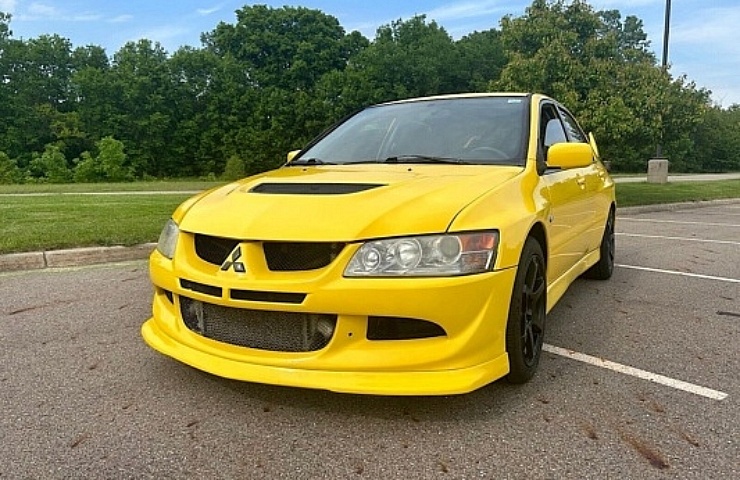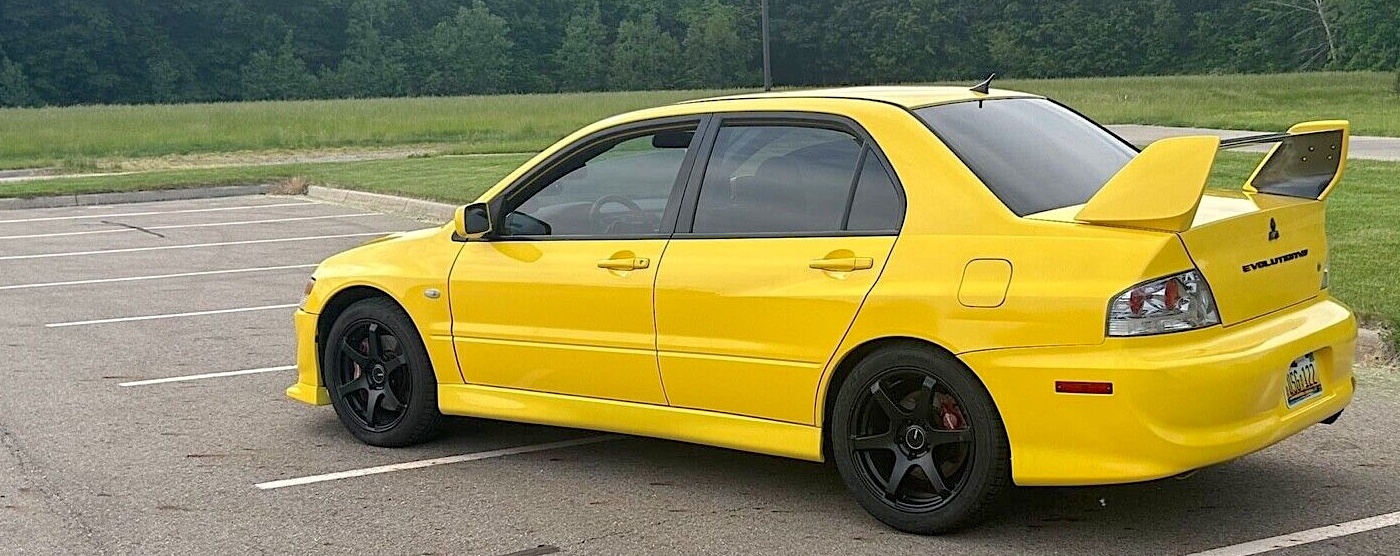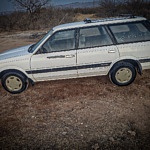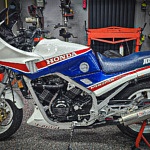For most of its existence, the Mitsubishi Lancer Evolution was banned from the US. The sports sedan—a homologation special that allowed Mitsubishi to compete in the World Rally Championship (WRC)—was never intended for American drivers. However, a groundswell of grassroots enthusiasm for the “Evo” caught Mitsubishi’s ear. So, with the eighth iteration, like the one recently for sale on eBay in Lansing, Mich., Mitsubishi began selling it stateside.
Shop now for Mitsubishi EVOsRally Testing
The Lancer Evolution’s origins lie with Mitsubishi’s rallying program. Starting in the mid-1960s, the company began competing in international rallies. At first, Mitsubishi competed in smaller events. But when the World Rally Championship was established in 1973, Mitsubishi entered the big leagues by campaigning cars in the East African Safari Rally, one of the toughest races in the world.
The following year, a 1974 Mitsubishi Lancer 1600GSR won the multi-day, 3,000-mile event—cementing the Triple Diamond’s bona fides in grueling off-road competition.
Mitsubishi continued its rallying efforts throughout the 1980s until a WRC rule change for the 1993 season favored a smaller car than the Galant VR-4 that Mitsubishi had been fielding. Enter the Lancer Evolution, based on a compact that Americans might know as the nondescript Mitsubishi Mirage.
Evolve or Die
Instead of the front-wheel-drive Mirage’s fuel-efficient motor, the Evo was fitted with a turbocharged 2.0-liter four underpinned by all-wheel-drive. That transformed the humble economy car into a hard-charging monster. According to WRC rules, manufacturers had to build at least 2,500 road-legal examples in order to qualify, thus bestowing the Mitsubishi Lancer Evolution to everyday drivers.
The race Evo was sent into battle against rallying legends like the Toyota Celica, Lancia Delta Integrale, and Ford Escort Cosworth. As the decade progressed, Mitsubishi continued to “evolve” the Evolution, updating the car every year or two to be more competitive. By the mid-1990s, Subaru’s Impreza WRX had emerged as the Evo’s biggest nemesis. A fierce rivalry developed for the remainder of the decade. Mitsubishi and Subaru won all but one of the Manufacturers’ and Drivers’ Championships from 1995 to 1999.
Neither car was available in the US, which mainly received vanilla versions of the Impreza and Lancer. However, the feud caught the attention of enthusiasts following Mitsubishi and Subaru’s game of one-upmanship. Finally, in 2002, Subaru brought its Impreza-based WRX to American shores to satisfy performance-hungry fans. Mitsubishi followed in 2003 with the Lancer Evolution VIII.
Shop now for Mitsubishi EVO partsTuners Unleashed
By then, the Evo bore only minimal resemblance to the base Lancer. It came standard with large fender flares, an aluminum hood and fenders, a carbon fiber rear wing, and body stiffening beneath the sheet metal. Powered by a turbocharged 2.0-liter 4G63, the US-spec Mitsubishi Lancer Evolution generated 276 horsepower and 286 pound-feet of torque.
But that was just the baseline. Tuners flocked to the moddable platform to create all sorts of insane speed demons. In the UK, special versions of the Mitsubishi Lancer Evolution VIII have been tuned to reliably put out 400 horsepower. In one famous Top Gear test, a Lamborghini Murcielago couldn’t outrun the Evo despite having three times the number of cylinders.
The car for sale on eBay is a standard Evo VIII—not the lightweight RS or the top-performing MR. Its benefit is that it’s almost completely stock. That’s a rarity for a car that was so amenable to tuning. While some modifications like blacked-out badges and an HID headlight kit were installed, those are easily reversible.
With 149,000 miles on the clock, it’s been well-used, and the seller admits it has been driven in snow and salt. At $29,000, it’s almost the same price as it was in 2005. But these days, that price won’t get you a hard-core machine like this one.
Shop now for Mitsubishi EVOs





